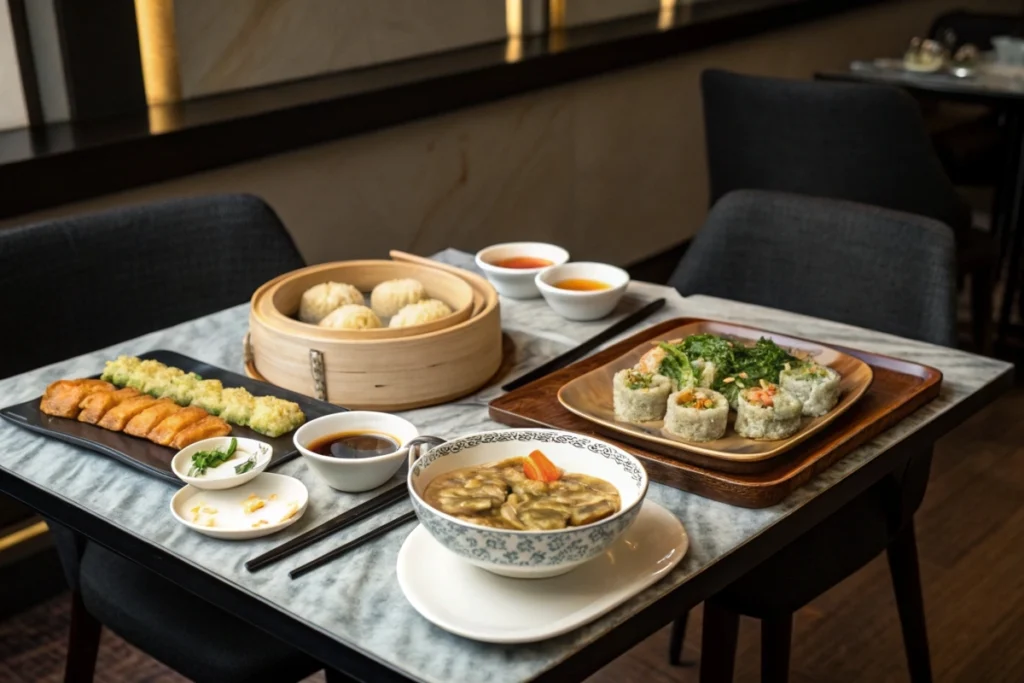Introduction
When it comes to chinese food vs japanese food, many people immediately think of fried rice versus sushi or dumplings versus sashimi. However, these two Asian cuisines are far more complex than just a handful of dishes. Both have shaped global culinary landscapes, offering unique ingredients, flavors, and techniques that continue to influence modern cooking around the world. Whether you’re a seasoned foodie or just curious about trying new dishes, understanding the core differences between Chinese and Japanese food can enrich your dining experiences and boost your home cooking repertoire.
Chinese cuisine boasts a vast range of regional specialties, from spicy Sichuan peppers to sweet Cantonese sauces. Meanwhile, Japanese food often centers around seasonality, minimal seasoning, and the beauty of plating. These diverging philosophies reflect each country’s cultural heritage, geography, and historical influences. By diving deeper into ingredients, cooking methods, and popular recipes, you’ll discover how each tradition brings its own flair to the table.
In this comprehensive guide, we’ll compare chinese food vs japanese food across cultural foundations, flavor profiles, cooking methods, and popular dishes. If you’re interested in exploring more about Japanese recipes in particular, feel free to discover Japanese recipes to expand your culinary journey. Let’s begin by examining the cultural pillars that have shaped these two diverse cuisines.
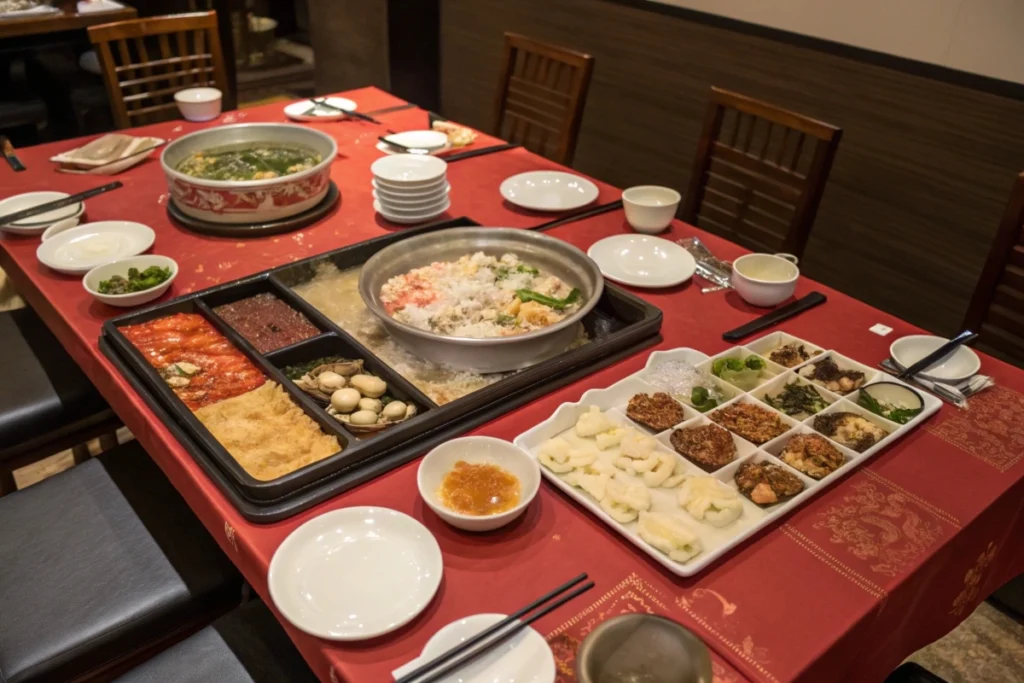
1. Cultural Foundations and Philosophies
Both Chinese and Japanese cuisines are deeply woven into their respective cultures, but their culinary philosophies differ in key ways. Chinese food vs japanese food often boils down to how each tradition perceives communal dining, ingredient usage, and the broader purpose of food.
Communal vs. Individual Dining
- China: Chinese families typically dine together around a circular table with a lazy Susan, sharing multiple dishes. The emphasis is on communal feasting, allowing everyone to sample various textures and tastes. Large platters of stir-fries, noodles, and soups encourage conversation and togetherness.
- Japan: Japanese meals often focus on individualized portions. Each person receives their own set of dishes—think bento boxes or personal bowls of rice and miso soup. While sharing is not uncommon, the overall approach prizes individual balance and minimal waste.
The Concept of Yin and Yang vs. Balance of Simplicity
- China: Ancient Chinese medicine stresses balancing “hot” and “cold” foods to maintain harmony in the body. Ingredients are chosen for their warming or cooling properties, guiding meal composition. Spicy peppers in Sichuan or warming ginger in soups can offset “cold” vegetables like cucumber or lettuce.
- Japan: Japanese cuisine holds minimalism and subtlety at its core, focusing on fresh, often raw ingredients like fish or vegetables. Rather than balancing hot and cold energies, the Japanese approach leans toward seasonality, purity, and aesthetic harmony.
Seasonal Importance
- China: Although Chinese cooking also respects the seasons, the sheer size of China means diverse climates and produce across provinces. Seasonal changes often manifest in regional specialties—like hairy crab in Shanghai during autumn.
- Japan: The concept of shun (peak season) is particularly crucial. Seasonal ingredients like bamboo shoots in spring or chestnuts in autumn are highlighted. Presentation mirrors these shifts, with plates sometimes decorated to reflect the time of year.
Influence of Religion and Philosophy
- China: Confucianism underscores family, hierarchy, and ritual, which is reflected in the emphasis on communal dining and banquets. Meanwhile, Buddhism inspired vegetarian dishes (particularly in temple cuisine), though meat is widespread across regions.
- Japan: Shinto and Zen Buddhism both shaped Japan’s preference for natural, unaltered flavors. A Zen-like focus on simplicity resonates in iconic dishes like sushi or sashimi, where fish is served raw to preserve its essence.
If you’re intrigued by the minimalistic side of Japanese cooking, exploring traditional Japanese desserts can highlight how modest sweetness and careful presentation exemplify these cultural fundamentals. Whether you favor communal Chinese banquets or the personal nuance of Japanese dining, these core philosophies shape how each cuisine delights the palate.
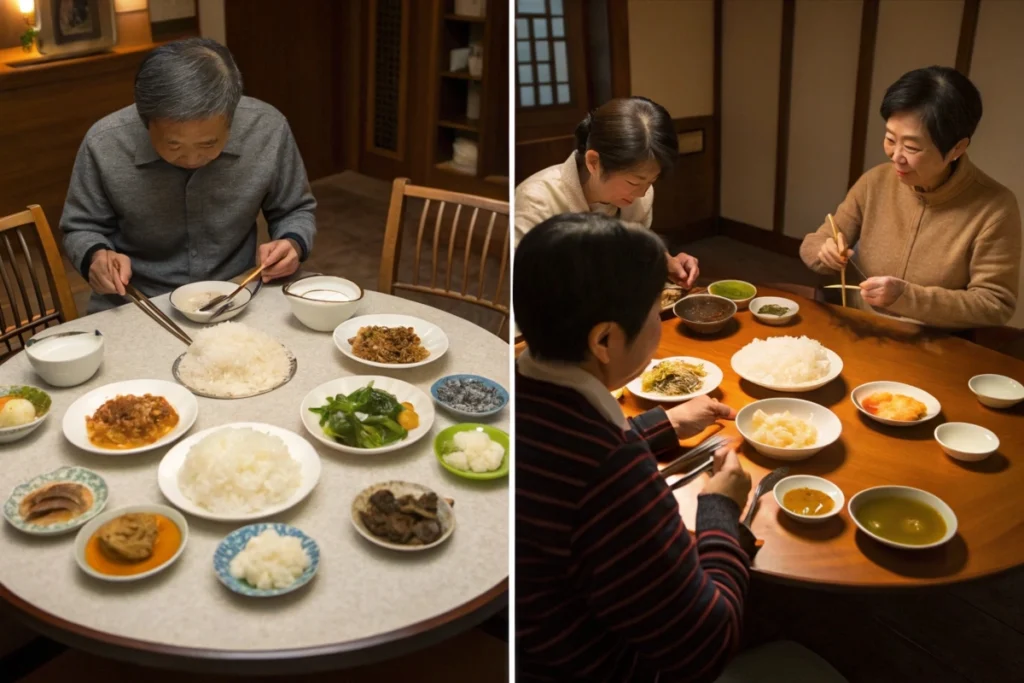
2. Flavor Profiles and Seasoning
When you think of chinese food vs japanese food, flavor often tops the list of distinctions. Chinese cuisine can range from boldly seasoned stir-fries to intensely spicy hot pots, whereas Japanese dishes typically highlight subtlety, letting fresh ingredients star.
Chinese Flavor Spectrum
China’s vast geographic expanse yields a wide array of tastes:
- Savory and Bold: Common seasonings include soy sauce, oyster sauce, hoisin sauce, and fermented bean pastes. Stir-fried dishes or red-braised meats emphasize rich depth.
- Spicy Heat: Regions like Sichuan or Hunan rely on chili peppers, peppercorns, and intense heat. Mapo tofu, for instance, is known for its tongue-numbing spice.
- Sweet & Sour: Cantonese and certain Southeastern cuisines lean toward sweet and tangy combos, like sweet-and-sour pork or lemon chicken.
- Aromatic Herbs: Ginger, garlic, scallions, and star anise frequently feature in stocks, marinades, and braises.
Japanese Flavor Nuances
In contrast, Japan’s hallmark is umami, a savory taste derived from sources like dashi (kelp and bonito flakes), soy sauce, or miso. This underpins many iconic dishes, ensuring layers of flavor:
- Delicate & Subtle: Sushi or sashimi rely on minimal sauces—just a brush of soy sauce or a dab of wasabi.
- Fermented Depth: Miso, natto, or soy sauce—fermented elements create complexity without heavy seasoning.
- Seasonal Infusions: Light broths or clear soups might incorporate mushrooms or vegetables picked at their peak. The aim is to accentuate natural flavors rather than mask them.
Sweetness and Desserts
- China: Desserts aren’t traditionally the finale of a meal. However, sweet treats like red bean buns or sesame balls do exist. Sweetness often appears mid-meal or as snacks.
- Japan: Wagashi (traditional sweets) revolve around red bean paste, matcha, and subtle sugar levels. Check out Japanese sweets recipes if you crave a mild sweetness balanced with earthy or floral notes.
Common Overlaps
Despite differences, both cuisines rely heavily on rice, noodles, and soy-based products (e.g., tofu). Stir-frying is common in Chinese cooking, while Japanese cuisine might prefer light steaming or simmering. Still, you’ll find similar usage of fresh seafood, vegetables, and a wide range of sauces in both traditions—though each sauce is tailored to distinct regional tastes.
In short, Chinese flavors skew hearty, complex, and bold, whereas Japanese flavors emphasize clean, nuanced tastes. Yet both aim to delight diners through balanced, satisfying meals that reflect cultural heritage. If you’re in the mood for something with more robust seasoning, you might lean toward Chinese. For those yearning subtlety, Japanese dishes are a top pick.
3. Cooking Methods and Techniques
Chinese food vs japanese food also diverges in cooking styles. Both rely on fresh ingredients, but how they transform those raw materials differs significantly—shaped by historical influences, climate, and local resource availability.
Chinese Cooking Methods
- Stir-Frying
Possibly the most iconic method, stir-frying uses intense heat and quick cooking. Meats and veggies are cut into bite-sized pieces, then tossed in a wok with sauces and aromatics. This technique preserves crispness and color. - Braising and Stewing
Many hearty dishes, such as red-braised pork, simmer in soy sauce, spices, and sugar over low heat. This process yields tender meats with robust flavors. - Steaming
Dim sum specialties like buns and dumplings are steamed to retain moisture. Fish is also often steamed with ginger and scallions, capturing delicate tastes. - Deep-Frying
Chinese cuisine includes an array of fried items—from crispy spring rolls to battered sweet-and-sour pork. The use of high-temperature oils ensures a crunchy exterior.
Given these dynamic techniques, Chinese cooks can create explosive flavor in short timespans, catering to communal, family-style dining. If you love that flair, check out how Japanese curry recipe (One Piece style) might differ in approach yet still produce a comforting stew.
Japanese Cooking Methods
- Steaming & Simmering
Minimal heat intensities or slow cooking preserve freshness. Dishes like chawanmushi or nimono (simmered vegetables) highlight the gentle approach. - Grilling
Yakitori (chicken skewers) or fish fillets are often grilled or broiled, sometimes with just a sprinkle of salt or a light teriyaki glaze. - Raw Preparations
Sushi, sashimi, and cold noodle dishes (e.g., zaru soba) underscore Japan’s confidence in the purity of high-grade fish and produce. - Light Frying (Tempura)
Japanese tempura uses a thin batter to encase vegetables or seafood, creating a delicate crunch. Light dipping sauces maintain the original taste of the ingredient.
Equipment & Tools
- China: Woks, cleavers, bamboo steamers. The wok’s shape and the cleaver’s versatility define the speed and style of Chinese cooking.
- Japan: Donabe (clay pot for simmering), specialized knives for specific tasks (e.g., filleting fish, cutting vegetables). Even the shape of a sushi knife is designed to produce clean cuts in raw fish.
Plating vs. Serving
- China: Large communal plates encourage sharing, so plating is often less elaborate.
- Japan: Presentation can be intricate. Each dish may appear on a separate small plate or in a bento. Chefs arrange items for visual harmony.
If you’re used to rapid stir-fries or hearty braises from Chinese cuisine, transitioning to Japanese cooking might feel lighter and more minimal in seasoning. Conversely, Japanese cooks looking to replicate Chinese styles may adopt robust sauces and a wok’s sizzling heat to create quick and flavorful meals.
4. Popular Dishes: From Street Food to Fine Dining
The breadth of chinese food vs japanese food becomes apparent in the myriad dishes offered, from informal street snacks to upscale restaurant fare. Let’s spotlight well-known items that capture each cuisine’s essence.
Chinese Icons
- Dumplings (Jiaozi): Whether boiled, fried, or steamed, dumplings are a staple from northern provinces. Popular fillings include pork, shrimp, or mixed vegetables.
- Peking Duck: A Beijing specialty, roasted duck with crispy skin is sliced and wrapped in thin pancakes with hoisin sauce and scallions. Perfect for feasts or celebrations.
- Mapo Tofu: Spicy Sichuan dish with tofu, minced pork, and fermented broad bean sauce. It exemplifies the region’s bold heat.
- Chow Mein / Lo Mein: Stir-fried or tossed noodles with vegetables and meat, a comfort food found worldwide.
Japanese Favorites
- Sushi & Sashimi: Arguably Japan’s most famous export, featuring fresh seafood served with minimal sauces to preserve natural flavors.
- Tempura: Lightly battered and fried shrimp, fish, or vegetables. Often served with a dipping sauce called tentsuyu.
- Ramen: A hearty noodle soup, each region offering distinct broths—be it tonkotsu (pork bone), shoyu (soy sauce), or miso.
- Bento Boxes: Pre-portioned lunch sets that might include rice, grilled fish, pickles, and a piece of fruit, reflecting a balanced meal approach.
Street Food & Snacks
- China: Skewers of lamb in Xinjiang, rice rolls in Cantonese markets, or scallion pancakes in northern cities. The variety can be overwhelming, but each region boasts signature street bites.
- Japan: Yakitori stalls, takoyaki (octopus balls), and okonomiyaki (savory pancakes). Street markets like Tokyo’s Tsukiji (Toyosu) or Osaka’s Dotonbori brim with these quick eats.
Fine Dining Scenes
- China: Upscale Cantonese restaurants might serve fresh seafood from live tanks. Meanwhile, refined banquet halls offer multi-course feasts with delicate soups, steamed fish, and intricate desserts.
- Japan: Kaiseki dining stands out as the epitome of Japanese haute cuisine—a multi-course meal showcasing seasonal ingredients, artful plating, and impeccable service. For dessert, consider traditional Japanese desserts that pair sweet beans, mochi, or matcha.
From dumplings sold on bustling sidewalks to elegant kaiseki meals behind sliding doors, both Chinese and Japanese gastronomic cultures offer a rich tapestry of options for every palate and price range. The next time you peruse a menu, you’ll notice how Chinese sections emphasize bigger flavors and communal plates, while Japanese sections opt for subtlety and individualized sets, reflecting their cultural roots.
5. Regional Variations and Modern Trends
Even though we often lump together chinese food vs japanese food as single entities, both countries boast extensive regional diversity and evolving culinary trends. Understanding these nuances further illuminates the depth of these two global cuisines.
Regional Variations in China
- Cantonese (Guangdong): Known for mild, fresh flavors, steaming, and stir-frying. Dim sum is a hallmark.
- Sichuan (Chuan): Famous for fiery spice and numbing peppercorns. Dishes like hot pot or mapo tofu characterize the region’s heat.
- Shandong (Lu): Emphasizes grains, seafood, and robust broths. Braising and pickling are common techniques.
- Jiangsu/Zhejiang (Su, Zhe): Refined, sweet-savory dishes often featuring fish and shellfish. Think delicate soups and elegant plating reminiscent of Shanghai cuisine.
Urban centers like Beijing, Shanghai, or Guangzhou each add their own twist, and diaspora communities abroad produce further adaptations—leading to “American-Chinese” or “Sino-Malaysian” hybrids.
Regional Variations in Japan
- Kanto (Tokyo area): More robust seasonings, thicker sauces for dishes like ramen or katsudon.
- Kansai (Osaka, Kyoto): Lighter seasoning, especially in Kyoto, which is known for delicate tofu and kaiseki meals. Osaka is famed for street foods like takoyaki and okonomiyaki.
- Kyushu: Miso-based and tonkotsu ramen finds its origins here, showcasing a richer, pork-bone-heavy soup.
- Hokkaido: Celebrated for seafood like crab, scallops, and salmon. Dairy is also more prominent—milk, cheese, and butter are frequently utilized.
For a deeper look at how location impacts cooking, you can check out a specialized japanese fish recipe focusing on local Hokkaido catches or a main dish typical of Tokyo’s bustling restaurant scene.
Modern Fusion & Health Trends
- China: Younger chefs blend Eastern staples with Western plating. Creative vegan or vegetarian versions of hot pot or dumplings are emerging, propelled by health-conscious consumers.
- Japan: Japanese-French fusion restaurants, matcha-infused Western pastries, and artisanal ramen shops reflect the globalizing influences. Seasonal, farm-to-table approaches remain strong, but with a twist—like organic, locally sourced produce.
Tech-Driven Convenience
Both countries embrace technology to modernize their culinary scenes:
- Online Ordering: In big Chinese cities, consumers rely heavily on mobile apps for quick meal deliveries—from traditional congee to trendy dessert shops.
- Japan’s Omotenashi: Touchscreen ramen kiosks, conveyor-belt sushi, and even robots assisting in kitchens underscore a blend of hospitality and modern efficiency.
While the roots of Chinese and Japanese cuisines remain deeply traditional, ongoing evolutions adapt them to new tastes and lifestyles. The next time you enjoy a bowl of ramen or a sizzling wok stir-fry, you’ll appreciate not just the age-old heritage but also the contemporary influences shaping each culture’s gastronomic future.
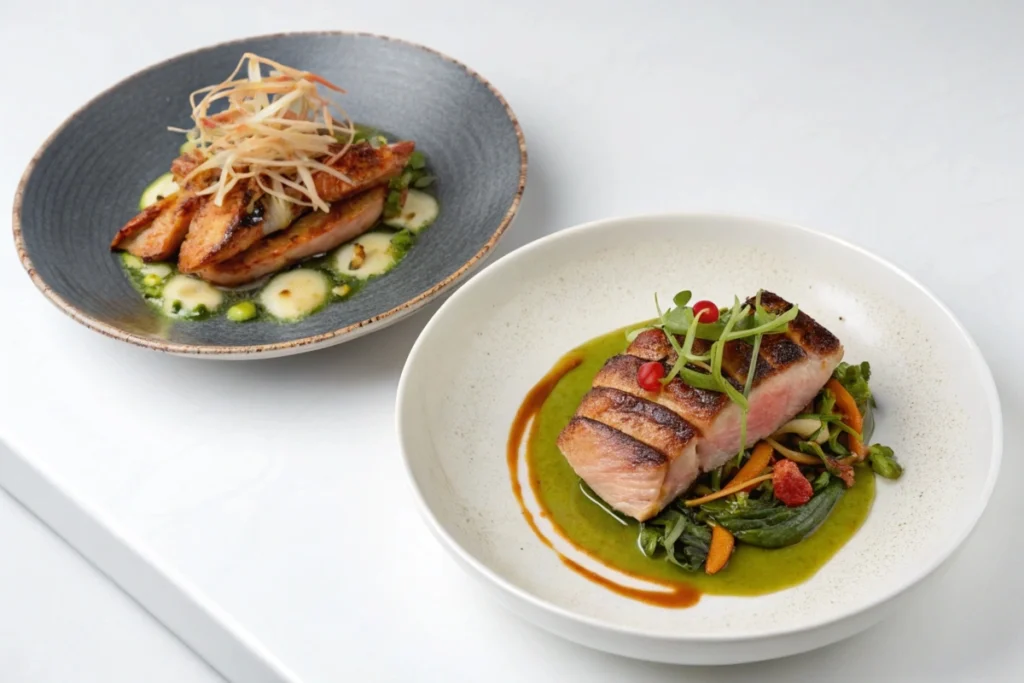
History and Context of Chinese Food vs Japanese Food
The culinary relationship between China and Japan dates back centuries, shaped by trade, political ties, and cultural exchanges. Although we see chinese food vs japanese food as distinct, their histories intersect at multiple points, influencing how each tradition developed.
Early Exchanges
China’s cultural influence on Japan took root in the 6th to 9th centuries. Buddhism, along with tea rituals and administrative practices, traveled across the sea. Chinese cooking methods, such as stir-frying or advanced noodle-making, also left their imprint. Early Japanese aristocrats often admired Chinese sophistication, though they adapted it to local tastes and resources.
Medieval Shifts
During Japan’s feudal era (12th–19th centuries), the country selectively absorbed more Chinese elements. Yet, Japan’s policy of national seclusion (sakoku) limited direct foreign influence from the 17th to mid-19th centuries. Meanwhile, China’s vast empire continued to refine regional cuisines, with each province developing specialized dishes. The Silk Road also brought new spices and produce to inland China, diversifying its culinary scope.
Meiji Restoration & Modernization
When Japan reopened to foreign trade in the late 19th century, Western influences converged with existing Chinese ones. Dishes like ramen—originally derived from Chinese wheat noodles—gained popularity in Japan. Over time, Japanese cooks localized these dishes, resulting in unique renditions quite different from their mainland counterparts. Meanwhile, Chinese diaspora in Japan spurred the opening of “Chuka ryori” (Chinese cuisine) restaurants, introducing dumplings, mapo tofu, and more to local diners.
Wartime & Post-War Period
World War II and its aftermath disrupted cultural ties, but the subsequent economic booms in both countries allowed for renewed cross-cultural pollination. Chefs traveled for training, and tourism soared, further blending influences. Meanwhile, overseas Chinese and Japanese communities in places like Southeast Asia or North America developed hybrid cuisines (e.g., American-Chinese takeout or Japanese-Peruvian Nikkei cooking).
Contemporary Dynamics
Today, both China and Japan hold significant culinary prestige worldwide. Restaurants in major global cities often serve either purely traditional fare or modern fusions of the two cuisines. Tourists frequent each country to experience hot pot, dim sum, sushi, or kaiseki. The rise of social media and TV cooking shows only accelerates mutual fascination, leading to more collaborations or crossovers.
By recognizing these historical threads, we better appreciate the nuanced distinctions between Chinese and Japanese food. Whether it’s the communal bustle of a Chinese banquet or the serene elegance of a Japanese kaiseki meal, each heritage weaves a complex tapestry shaped by centuries of cross-cultural growth and adaptation.

Practical Examples and Use Cases
Scenario 1: Hosting a Themed Dinner
You plan a cultural appreciation night at home, featuring chinese food vs japanese food. Split the table in two sections: one side for Chinese dishes like fried rice, kung pao chicken, and dumplings; the other side for Japanese staples like sushi rolls, miso soup, and tempura. Invite friends to sample both sets, encouraging them to discuss differences in taste, plating, and portion size. This interactive approach not only provides variety but also sparks conversation about each culture’s culinary essence.
Scenario 2: Fusion Menu at a Small Café
A budding chef decides to open a cozy café. She incorporates Chinese-American favorites, such as General Tso’s Chicken, alongside light Japanese bento boxes. By labeling certain items with distinct icons (e.g., a wok for Chinese, a sushi roll for Japanese), customers can choose easily. The café also rotates specials, featuring a Japanese-inspired mapo tofu or a miso-infused dumpling sauce. This cross-cultural approach caters to diverse palates, offering something for everyone.
Scenario 3: Travel Blogging and Vlogs
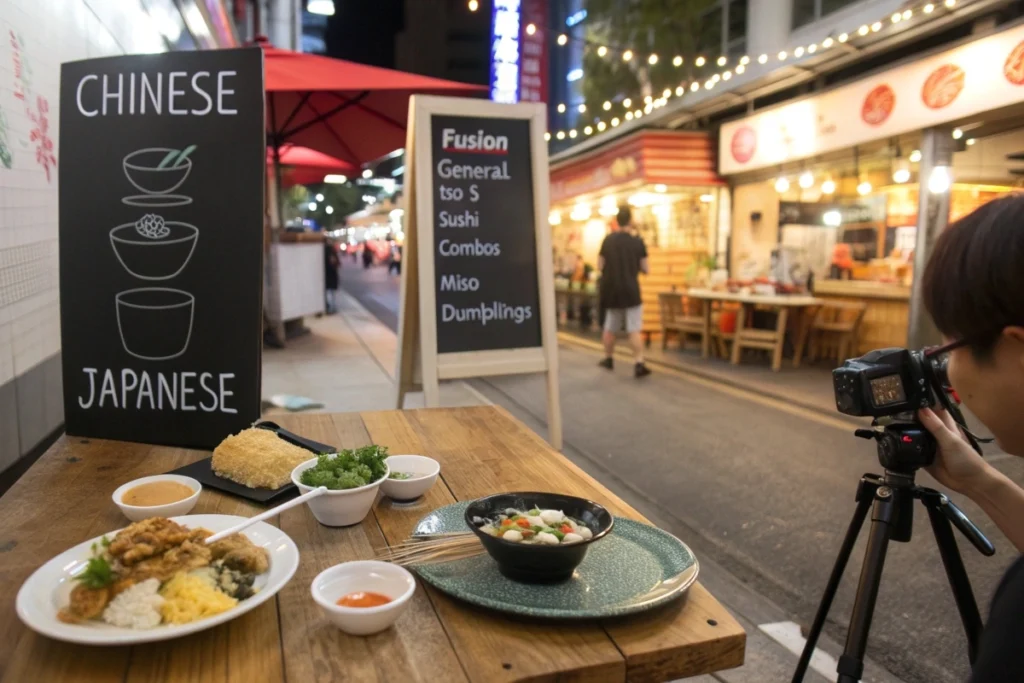
FAQs
1. What are the main differences between Chinese and Japanese food?
- Chinese food often features stronger flavors with soy sauce, chili oil, and various fermented sauces. Japanese cuisine highlights subtlety, freshness, and minimal seasoning. Communal sharing is typical in China, while Japan favors individual plating.
2. How do cooking methods differ in chinese food vs japanese food?
- Chinese dishes commonly utilize stir-frying, braising, steaming, or deep-frying at high heat. Japanese cooking includes more steaming, grilling, light frying (tempura), and raw preparations like sashimi. Both rely on high-quality ingredients but approach seasoning differently.
3. Are Chinese and Japanese restaurants abroad authentic to their origins?
- Many restaurants adapt recipes to local tastes. “American-Chinese” or “Westernized Japanese” menus often appear. However, you can find eateries worldwide that strive to remain faithful to regional Chinese or Japanese traditions—especially in multicultural cities.
4. Which cuisine is healthier?
- Both can be healthy if prepared with fresh ingredients and moderate oil or sodium. Japanese meals often rely on raw fish, steamed rice, and minimal sauces, which many consider light. Chinese cuisine, especially southern or Cantonese styles, can be similarly balanced, though some regional Chinese dishes use more oils or sugar.
5. Chinese food vs japanese food taste: which is spicier?
- Chinese cuisine can be very spicy, notably in Sichuan or Hunan provinces. Japanese food rarely emphasizes heat; wasabi or mustard are used sparingly, and dishes typically highlight umami over spice.
6. How can I replicate these cuisines at home?
- Look for specialty ingredients: soy sauce, fish sauce, miso, or chili bean paste. Invest in correct equipment—a wok for Chinese stir-fries or a sushi knife for Japanese sashimi. For easier starts, consider Japanese chicken fried rice recipes or simple Chinese stir-fried noodles.
7. What about difference between japanese and chinese faces—isn’t that relevant here?
- While some search for physical differences between Chinese and Japanese people, that’s a separate topic unrelated to cuisine. Our focus is culinary, exploring how cultural histories shape food traditions.
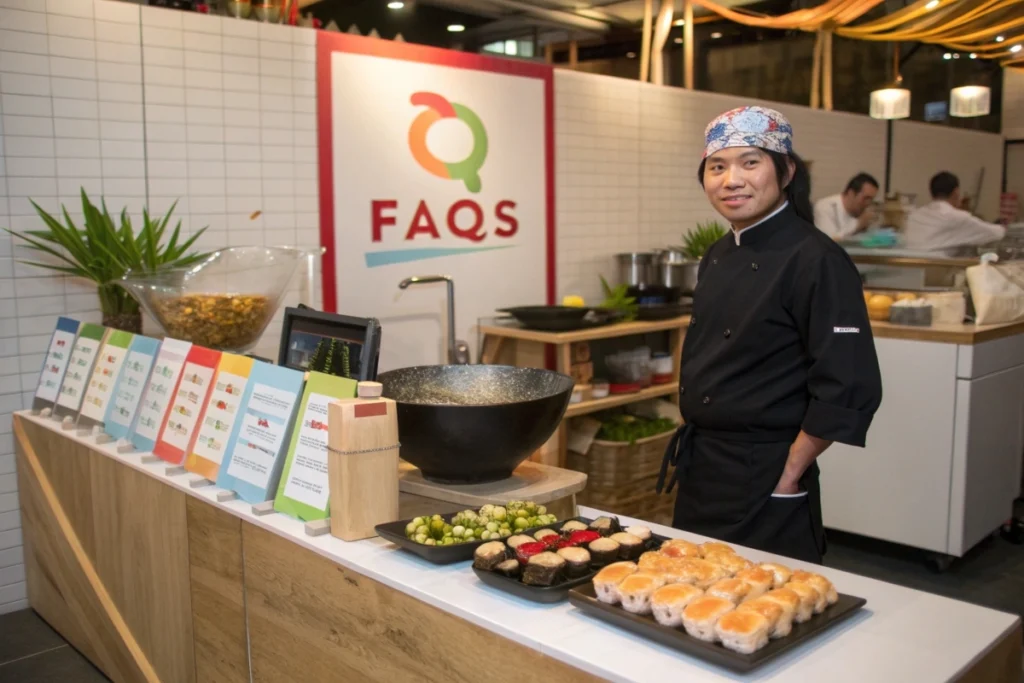
Conclusion
Understanding chinese food vs japanese food goes beyond picking between kung pao chicken or sushi rolls. Each culinary tradition reflects a deep-rooted philosophy, shaped by geography, climate, historical exchange, and social customs. While Chinese cuisine excels at communal feasting, bold seasoning, and a vast repertoire of stir-fries, dumplings, and spicy broths, Japanese food prioritizes seasonal subtleties, minimal sauces, and visually serene presentations. Both remain cornerstones of global gastronomy, influencing countless fusion dishes and inspiring chefs worldwide.
Whether you prefer the sizzling drama of a Chinese wok or the tranquil artistry of a Japanese sushi counter, exploring these contrasting cuisines can significantly enrich your dining experiences. You might host a dinner party featuring both battered sweet-and-sour chicken and delicate sashimi to highlight the differences. Or perhaps you’ll try your hand at new cooking techniques—fusing robust flavors from China with Japanese plating finesse. If you’re eager to discover more about Japanese recipes specifically, consider exploring easy Japanese recipes as a starting point.
Ultimately, Chinese and Japanese cuisines are not competitors but complementary forces that showcase Asia’s culinary diversity. By grasping the nuances of each—be it the communal tradition of sharing plates or the refined practice of individually served meals—you’ll come away with a deeper appreciation for how food can embody culture, heritage, and innovation.
